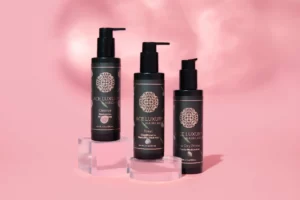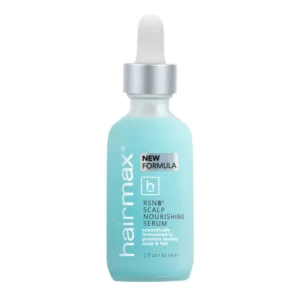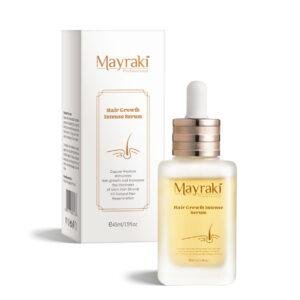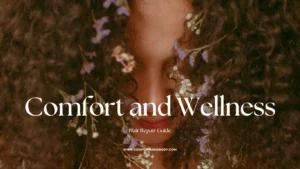Introduction:
Welcome to 10 Best Hair Tips! In a world where first impressions matter, your hair often writes the narrative before you even get a chance to introduce yourself. It’s more than just a style statement; it’s a reflection of your health, your personality, and your journey. The essence of hair care goes beyond the superficial allure; it’s about nurturing your hair from the root to the tip.
It’s about understanding the unique language of your hair and responding to its needs with love, patience, and the right care routines.
10 best hair tips here we go!
Embracing Your Unique Hair Type:
However, the path to luscious, healthy locks isn’t always straightforward, especially with the myriad of hair types and the unique challenges each one presents. Whether you sport a mane of straight strands, waves of glamour, curls of mystique, or the profound beauty of coily locks, each hair type is a world in itself, with its own set of rules and care routines. Your hair is a testament to your individuality, and embracing it can be a journey of self-discovery and self-love.
Embarking on a Transformative Journey:
10 Best Hair Tips
In the upcoming sections, we delve into the heart of hair care for various hair types and conditions. From the silken threads of fine hair to the robust waves of black hair, from the challenges faced by swimmers to the seasonal woes of monsoon and rainy seasons, we’ve got you covered. Our tailored tips aim to address the unique needs of different hair types, providing a roadmap to revitalized, healthy, and gorgeous locks.
Embark on this transformative journey with us, as we unravel the secrets to maintaining a healthy scalp and vibrant hair, regardless of your hair type or the hurdles along the way. With the right care, the potential for breathtaking, revitalized locks is within your grasp. So, let’s turn the page and begin this enlightening journey towards unveiling the best version of your hair, shall we?
Understanding Your Hair Type:
Your hair is as unique as your fingerprint, showcasing a blend of your heritage, lifestyle, and personal flair. Understanding your hair type is the cornerstone of effective hair care. It’s akin to having a roadmap that guides you through the myriad of products, styles, and care routines available. Let’s delve into the basic hair types and what makes each of them unique:
Straight Hair: Known for its sleek texture and natural shine, straight hair has a tendency to get oily faster due to the even distribution of sebum throughout the length of the hair.
Wavy Hair: A beautiful blend of straight and curly hair, wavy hair boasts a natural bounce and volume. It’s versatile and can be styled in numerous ways.
Curly Hair: With distinct curls and volume, curly hair is full of personality. However, it tends to be dry as the natural oils from the scalp don’t travel down the hair shaft as easily.
Coily Hair: Coily or kinky hair is known for its tight curls and rich texture. It’s delicate and requires gentle care to prevent breakage and maintain moisture.
Knowing your hair type is the first step towards personalized care, enabling you to choose the right products and routines that will nurture and enhance your natural locks.
Hair Care for Low Porosity Hair:
10 Best Hair Tips
Low porosity hair is like a loyal friend with strong boundaries—it’s selective about what it lets in and out. The cuticles in low-porosity hair are tightly packed, making it challenging for moisture and oils to penetrate the hair shaft. However, once moisturized, low-porosity hair retains moisture well. Here are some tailored tips to care for low-porosity hair:
Moisture is Key: Use lightweight, water-based moisturizers and hair products. They provide the hydration your hair craves without weighing it down.
Heat it: Warmth opens up the cuticles of low-porosity hair, allowing moisture to seep in. A warm water rinse or a heated deep conditioning treatment can work wonders.
Avoid Buildup: Stay away from heavy oils and butter that can cause buildup. Opt for lighter oils like argan or jojoba oil that provide nourishment without clogging the cuticles.
Clarify Regularly: Use a clarifying shampoo once a month to get rid of any product buildup that may have accumulated, ensuring your hair remains receptive to moisture.
Patience and Consistency: Low porosity hair may take a little longer to show results, but with consistent care and patience, you’ll see your hair transform into a healthier, more vibrant version of itself.
By understanding the unique characteristics of low-porosity hair and tailoring your hair care routine accordingly, you pave the way for well-moisturized, healthy, and resilient locks.
Nourishing Fine Hair:
10 Best Hair Tips
Fine hair, often admired for its soft texture and silky touch, comes with its own set of challenges. The delicate nature of fine hair makes it prone to breakage, lack of volume, and sometimes, an oily appearance. Here’s how you can navigate through these challenges while keeping your fine hair nourished and vibrant:
Gentle Cleansing: Use a mild, sulfate-free shampoo to cleanse your scalp without stripping away natural oils. Overwashing can lead to dryness, so find a balance that works for your hair.
Lightweight Conditioning: Opt for lightweight conditioners that won’t weigh your hair down. Apply conditioner primarily to the ends to prevent flatness at the roots.
Volumizing Products: Incorporate volumizing mousse or spray into your routine to add a lift to your roots and create the illusion of fuller hair.
Avoid Heavy Oils and Serums: Stay away from heavy hair products that can weigh down fine hair. If needed, use light oils like argan oil sparingly on the ends.
Regular Trims: Regular trims can help maintain a healthy appearance and prevent split ends, which can further reduce the thickness of your hair.
Heat Protection: If you use heat styling tools, always apply a heat protectant to prevent damage and breakage.
Maintaining Straight Hair:
10 Best Hair Tips
Straight hair, with its sleek appearance and smooth texture, is often envied for its effortless beauty. However, it’s not without its challenges. The natural oils from the scalp easily travel down the hair shaft, sometimes leading to an oily scalp and flat appearance. Here are some tips to keep your straight hair healthy and vibrant:
Balanced Washing: Find a washing routine that keeps your scalp clean but doesn’t over-dry your hair. You might find that alternating between regular shampoo and a clarifying shampoo works well.
Lightweight Products: Use lightweight styling products to prevent oil buildup and maintain a fresh, clean appearance.
Dry Shampoo: Incorporate a good dry shampoo into your routine to absorb excess oil and add a little volume to the roots.
Regular Trims: Regular trims will keep your hair looking fresh and help prevent split ends.
Natural Bristle Brush: Use a natural bristle brush to distribute natural oils from the scalp through the length of your hair, promoting a healthy shine.
Protective Styles: If you’re looking to maintain volume, consider loose updos or braids that can add texture and prevent your hair from becoming too flat.
With the right care and a little patience, maintaining the health and beauty of fine and straight hair can become an effortless part of your routine.
Embracing Wavy Hair:
Wavy hair is like the melodious tune between the soft notes of straight hair and the bold beats of curly hair. It offers a unique blend of texture and versatility. However, to make the most of your waves, understanding how to enhance and care for them is crucial. Here are some tips and recommendations:
Hydration is Essential: Keep your hair well-moisturized to prevent frizz and enhance your natural wave pattern. Use hydrating shampoos and conditioners designed for wavy or curly hair.
Use Wave-Enhancing Products: Products like wave sprays or light hold gels can help enhance your natural wave pattern without weighing your hair down.
Avoid Brushing When Dry: Brushing wavy hair when dry can cause frizz. Instead, detangle your hair with a wide-tooth comb when it’s wet and conditioned.
Diffuse with Care: If you use a diffuser to dry your hair, do it on a low heat setting to maintain the natural wave pattern and prevent frizz.
Regular Trims: Regular trims will help keep your waves looking fresh and free from split ends.
Deep Conditioning: Incorporate a weekly deep conditioning treatment to nourish your hair and keep it looking vibrant.
Celebrating Black Hair:
Black hair is a crown of glory, with its rich texture and profound versatility. However, its unique structure requires a tailored approach to care and styling. Here’s how you can celebrate and care for your black hair:
Understanding the Structure: Black hair has a unique coil structure that can be prone to dryness and breakage. Understanding this can help tailor a care routine to meet its specific needs.
Moisture Retention: Moisturizing is crucial for black hair. Use creamy, hydrating shampoos and conditioners, and consider incorporating a leave-in conditioner into your routine.
Gentle Detangling: Detangle your hair gently using a wide-tooth comb or your fingers to prevent breakage.
Protective Styling: Embrace protective styles like braids, twists, or updos to protect your hair from environmental damage and promote growth.
Regular Deep Conditioning: Deep conditioning treatments can provide the extra moisture and nourishment that black hair often needs.
Scalp Care: Maintain a healthy scalp by keeping it clean and well-moisturized. Consider using oils like coconut or jojoba oil to promote a healthy scalp environment.
Avoid Harsh Chemicals: Stay away from harsh chemicals in relaxers, dyes, and other hair products that can cause damage and dryness.
With the right care, products, and routines, you can celebrate the natural beauty of wavy and black hair, promoting health, growth, and endless styling possibilities.
Hair Care for Swimmers:
Swimming is a fantastic way to keep fit and unwind, but the chlorine and other chemicals found in pool water can be harsh on your hair. They can strip away the natural oils, leading to dry, brittle strands and sometimes, a greenish tint. Here’s how you can dive into your swimming routine without compromising the health of your hair:
Pre-Swim Protection: Wet your hair with clean water before entering the pool. Your hair will absorb the clean water, reducing the amount of chlorinated water it can soak up. Applying a light coating of coconut oil or a silicone-based swim cap can also provide a protective barrier.
Wear a Swim Cap: While it may not be a fashion statement, a swim cap is your hair’s best friend when it comes to swimming. It provides a physical barrier between your hair and the chlorinated water.
Post-Swim Rinse: Rinse your hair thoroughly with clean water as soon as you get out of the pool to wash away chlorine and other chemicals.
Use a Clarifying Shampoo: Invest in a good clarifying shampoo to remove chlorine buildup and other impurities from your hair. Use it after every swim to keep your hair clean and healthy.
Deep Conditioning: Chlorine can be very drying, so it’s essential to restore moisture with a deep conditioning treatment after swimming.
Stay Hydrated: Drink plenty of water and keep your hair moisturized to combat the drying effects of chlorine.
Combatting Dandruff:
Dandruff, the unsolicited snowflakes from your scalp, can be a source of discomfort and embarrassment. It’s often caused by an overgrowth of yeast, a dry scalp, or certain skin conditions. Here’s how you can keep dandruff at bay:
Choose the Right Shampoo: Use an anti-dandruff shampoo that contains active ingredients like pyrithione zinc, selenium sulfide, or ketoconazole to combat yeast overgrowth.
Regular Cleansing: Keep your scalp clean by shampooing regularly to prevent oil and skin cell buildup, which can exacerbate dandruff.
Exfoliate Your Scalp: Just like your skin, your scalp can benefit from occasional exfoliation to remove dead skin cells. Use a gentle scalp scrub or exfoliating shampoo once a week.
Moisturize Your Scalp: If dryness is the cause of your dandruff, use a light, non-greasy scalp moisturizer or oil to maintain a healthy scalp environment.
Avoid Irritating Products: Stay away from harsh hair care products that can irritate your scalp and worsen dandruff. Opt for gentle, sulfate-free shampoos and conditioners.
Consult a Dermatologist: If dandruff persists or worsens, it may be a good idea to consult with a dermatologist who can provide personalized advice and treatment options.
With the right care and attention, you can enjoy a refreshing swim and keep dandruff under control, ensuring your scalp and hair remain healthy and vibrant.
Monsoon Hair Care Tips:
10 Best Hair Tips
Monsoon brings a respite from the scorching heat but also presents a set of challenges for your hair. The increased humidity can lead to frizz, while the dampness can cause a myriad of scalp issues. Here’s how you can keep your locks healthy and frizz-free during the monsoon season:
Anti-Frizz Products: Invest in good quality anti-frizz serums or creams to keep the frizz at bay. Apply these products on damp hair to lock in the smoothness.
Gentle Shampooing: Use a mild, sulfate-free shampoo to cleanse your scalp without stripping away natural oils. Overwashing can lead to dryness, so find a balance that works for your hair.
Deep Conditioning: The humidity can make your hair dry and prone to breakage. A weekly deep conditioning treatment can help restore moisture and nourish your hair.
Avoid Tying Wet Hair: Tying up wet hair can lead to breakage and scalp issues. Let your hair dry completely before styling it.
Use a Wide-Tooth Comb: Detangle your hair with a wide-tooth comb to prevent breakage and reduce frizz.
Managing Oily Scalp:
An oily scalp can be the result of overactive sebaceous glands, which can be exacerbated by factors like stress, hormonal imbalances, or even the weather. Here’s how you can manage an oily scalp:
Balanced Washing: Overwashing can strip your scalp of natural oils, prompting it to produce more oil. Find a washing routine that keeps your scalp clean but doesn’t over-dry your hair.
Use Lightweight Products: Opt for lightweight, water-based hair products that won’t contribute to oil buildup.
Clay Masks: Clay masks can help absorb excess oil from your scalp while providing a gentle cleanse.
Avoid Touching Your Scalp: Frequently touching your scalp can transfer oils and dirt from your hands, exacerbating the oiliness.
Rainy Season Hair Care:
10 Best Hair Tips
The rainy season can be harsh on your hair with excess moisture leading to frizz, and the dampness potentially causing scalp infections. Here’s how to protect your hair:
Waterproof Covering: Use a waterproof hood or umbrella to protect your hair from getting wet in the rain.
Anti-Humidity Sprays: These sprays can help lock in your style and prevent the humidity from ruining your look.
Regular Trims: Keeping your hair trimmed will help prevent split ends and keep your hair looking fresh.
Recommended Products: Look for products labeled as “anti-humidity” or “smoothing” to help combat the challenges posed by the rainy season. Lightweight serums and sprays can provide a protective barrier without weighing your hair down.
With the right care and products, you can navigate through the monsoon and rainy seasons with healthy, vibrant hair, and keep an oily scalp under control.
10 tips to promote healthy hair:
- Healthy Diet: Consume a balanced diet rich in fruits, vegetables, lean proteins, and healthy fats to nourish your hair from within.
- Hydrate Your Hair: Use hydrating conditioners and avoid over-washing to maintain moisture.
- Heat Protection: Apply heat-protectant products before using heat-styling tools, and opt for air drying when possible.
- Regular Haircuts: Trim your hair every 6-8 weeks to prevent split ends and promote growth.
- Right Hair Products: Choose products tailored to your hair type and concerns to promote growth and manage issues like dryness or frizz.
- Avoid Over-Brushing: Use a wide-toothed comb for detangling and minimize brushing to prevent hair damage.
- Natural Hair Masks: Utilize natural ingredients like avocado, honey, and coconut oil for homemade hair masks to nourish your hair.
- Adequate Sleep: Ensure 7-8 hours of sleep nightly to support overall health, including hair health.
- Sun Protection: Wear a hat or use hair products with SPF to shield your hair from sun damage.
- Embrace Natural Hair: Avoid harsh chemicals and treatments, and love your natural hair, nurturing it with the right care and products.
Conclusion:
10 Best Hair Tips
Achieving revitalized, luscious hair involves a blend of external care, internal nourishment, and advanced technologies. Understanding the unique language of your hair, responding with the right products, and embracing modern science is key.
As you move forward with this knowledge, the journey to revealing the best version of your hair is within reach. Experiment with these tips, explore the benefits of recommended supplements and technologies and discover what resonates with your unique hair needs. Your hair is a canvas awaiting your nurturing touch, ready to flourish into its fullest potential.
Embrace the journey, and watch as your hair transforms into a healthier, more vibrant version of itself. Your locks are not just a testament to your external beauty but a reflection of your health and the care you invest in them. With the right approach, the dream of flaunting gorgeous, healthy hair is well within your grasp. Embrace it, celebrate it, and let your hair shine with all its glory!
We hope these 10 best hair tips will help you!
Recommended product to help grow healthy hair:
FAQ
What are the 5 tips for healthy hair?
- Maintain a Balanced Diet: Nutrient-rich foods promote healthy hair. Include a variety of fruits, vegetables, lean proteins, and whole grains in your diet.
- Regular Trimming: Get regular trims to prevent split ends and promote hair growth.
- Use Gentle Hair Products: Opt for sulfate-free shampoos and conditioners that are gentle on your hair and scalp.
- Avoid Excessive Heat Styling: Minimize the use of heat styling tools and always use a heat protectant spray when styling.
- Stay Hydrated: Drink plenty of water to keep your hair hydrated from within
How do you take care of your hair properly?
- Understand Your Hair Type: Knowing your hair type helps in choosing the right products and creating an effective hair care routine.
- Wash Wisely: Don’t over-wash your hair; 2-3 times a week is usually enough. Use lukewarm water and finish with a cold rinse to seal the hair cuticles.
- Condition Regularly: Condition your hair every time you shampoo to keep it soft and manageable.
- Protect Your Hair: Wear a hat or use a protective spray to shield your hair from sun, wind, and other environmental factors.
- Get Regular Professional Check-ups: Visit a hair specialist to address any concerns and get personalized advice.
How can I maintain my hair naturally?
- Natural Oils: Use natural oils like coconut or olive oil for deep conditioning treatments.
- Herbal Rinses: Rinse your hair with herbal infusions made from ingredients like chamomile, aloe vera, or tea tree to promote scalp health.
- Healthy Diet: A balanced diet rich in essential vitamins and minerals supports natural hair health.
- Gentle Handling: Be gentle while washing, drying, and styling to prevent breakage.
- Avoid Chemical Treatments: Stay away from harsh chemical treatments and opt for natural alternatives whenever possible.
How can I improve my hair quality?
- Nutrition: Ensure your diet is rich in vitamins, minerals, and proteins which are essential for hair health.
- Scalp Massages: Regular scalp massages can stimulate blood flow and promote hair growth.
- Use Quality Products: Invest in good quality, gentle hair care products that suit your hair type.
- Reduce Stress: Practice stress-reducing techniques like yoga and meditation as stress can negatively impact your hair.
- Regular Exercise: Exercise promotes overall health which in turn will reflect in the quality of your hair.
Affiliate Disclosure:
The links contained in this product review may result in a small commission. This goes towards supporting our research and editorial team and please know we only recommend high-quality products.
Note: This article is for informational purposes only and is not intended to diagnose, treat, or cure any disease. Always consult a healthcare professional before taking any supplement or making any changes to your diet or lifestyle.




















Hi! I just finished reading your blog post, and I must say, it was excellent. Your ability to explain complicated concepts in a simple and engaging way is truly remarkable. Thank you for providing such valuable content. I can’t wait to read more from you in the future.
Thank you!